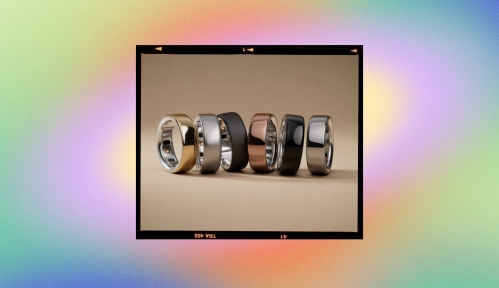Successfully using and maintaining direct eye contact in conversation often requires a little bit of practice—and sometimes plenty of patience. Eye contact can help intensify the moment and deepen your connection with those around you.
Experts in This Article
psychotherapist and sex therapist
There are several reasons why you may struggle to use eye contact in conversation. “One is social discomfort and/or social anxiety, where feelings of anxiety in social settings can cause eye contact to be overwhelming,” says Kassondra Glenn, LMSW, a licensed social worker and specialist at Diamond Rehab.
“Another consideration is neurodiversity, in particular the autism spectrum, for those who fall on the autism spectrum often have increased difficulty making and maintaining eye contact in conversation,” says Glenn. Humans tend to associate the use of eye contact in conversion with depth in connection and genuineness, whereas someone might take offense to a lack of eye contact.
However, perceived disinterest or appeal is often due to society’s influence, and is in fact a misbelief, so it’s best to remove the stigma and assumptions around eye contact in conversation to avoid feeling discouraged and disconnected to others when speaking.
What It Means To Use Eye Contact in Conversation
Eye contact is a way of non-verbal communication, which may help connect people and facilitate the learning and absorption of what’s being said, as a form of message transfer. Again though, it’s an aid often due to the associations we make, which can be very helpful in some cases, but also unfair or erroneously-imposed, in others.
According to Glenn, a cause of not using eye contact in conversation could be boredom (it happens!) or distraction, where suddenly the listener thinks about something else and is left feeling a little anxious and aloof, thus unable to maintain a gaze.
Another factor might be due to remembrance, where the listener may have remembered something they had forgotten about earlier, and now feels worried, or somehow visibly unsettled. “This is why it is also important to ask for clarification in this situation rather than making assumptions,” says Glenn.
It can also be a defense mechanism to ease anxiety or fear. “For people who struggle to maintain eye contact for any reason—fear of embarrassment, feeling exposed, insecure, etc.—sometimes the way we try to protect ourselves from that discomfort is by avoiding eye contact, as a form of distraction and by looking elsewhere,” says Madeline Lucas, LCSW, therapist and clinical content manager at Real.
Eye Contact in Conversation is Easier for Some More Than Others
“For some people, engaging in eye contact in conversations comes naturally and easily and creates an opportunity for connection, empathy, and trust that some people crave, or at least feel comfortable receiving,” says Lucas.
Yet, for others, the use of eye contact in conversation may represent a risk or threat and cause discomfort (even unconsciously), so it’s somewhat individualized, too. Because eye contact can create intimacy between people, it can either make someone feel warm and fuzzy or more vulnerable and exposed. And of course, some people just find eye contact in conversation to be awkward!
“Whatever the reason, avoiding eye contact becomes the way we adapt to protect ourselves from fears and discomforts,” says Lucas. Similarly, “the benefits of eye contact often come from the social narrative that’s built around it,” says Glenn, “so it’s important to remember that lack of eye contact does not necessarily signal disinterest, and there are mental health and neurodiversity reasons for lack of eye contact.”
Ask for clarification, if it concerns you, and set the space to encourage greater use. Create a comfortable environment and have a calm presence, which can help people feel at ease and can make eye contact easier.
And take note: it’s perfectly fine and often normal for there to be occasional breaks in eye contact when having an ongoing and sustained conversation, so resist getting too much in your head about it.
What it Means to use Eye Contact in Conversation
Eye contact is one of the primary ways we communicate with others nonverbally in our lives. When someone meets us with eye contact, often this communicates a sense of trust, or ease, or ideally even safety. “The hope is that in this case, eye contact may bridge a gap between you and the other person, leaving space for connection and empathy,” says Lucas.
“If as a colleague, for example, I can’t bear to look at my boss as I communicate something that has gone wrong in the workplace, I may miss out on this opportunity for true connection, and if in turn, my boss is present and providing eye contact, I may feel more at ease and heard in the situation as the recipient,” explains Lucas.
As relational human beings, we are interacting almost constantly with those around us through nonverbal communication. “Eye contact is one of those nonverbal communication techniques that can say and do a lot in these interactions, where it may communicate trust, safety, and an invitation to relax, and additionally, a lack of eye contact may create an air of distrust, skepticism, or self-consciousness, whether that’s intended or not,” says Lucas.
Benefits of Using Eye Contact in Conversation
“Eye contact creates an opportunity for connection and empathy with another person, and research has shown that eye contact prepares your system to empathize with another person’s by simultaneously activating the part of both participants’ brain,” says Lucas. This then helps us recognize and share emotions with one another, laying the foundation for use of empathy, too.
“This can be our system’s way of coping with those tough feelings that arise when we try to engage in eye contact,” Lucas says. Becoming aware of what those concerns or fears may be will help create a space to challenge them and practice using direct eye contact, if it’s a skill that you desire and want to work on for greater use in the future.
Another benefit of eye contact is that it can communicate presence and signify that you’re paying attention. “This, along with other nonverbal cues, such as nodding or mirroring facial expressions, can communicate to the other person that you are actively listening and paying attention,” says Lucas.
“Alternatively, a lack of eye contact can be left up for interpretation by the other person, and may be influenced by their own experience of or insecurities socially. Is the other person bored? Have I said something wrong?,” cautions Lucas.
So, when you are on the receiving end of a lack of eye contact, remembering that there can be any number of reasons that person is struggling to maintain eye contact is important, and ot can help you try and remain present in the conversation. There’s a lot more to be said about it than meets the eye!
Tips for Using Eye Contact in Conversation
Try to keep a softened gaze when making eye contact in conversation, and focus on staring between the eyebrows, to start. “Creating too much deep focus may come across as intimidating or challenging,” says Lucas.
Allow yourself some flexibility, too. Being too hard on yourself and forcing the focus may create more stress in the situation. “Some occasional, slow glances away in a conversation can feel natural and may relieve some of the pressure, too,” Lucas adds.
And lastly, practice in a mirror, to see yourself and within a safe space, like your bedroom. “Spend some time with yourself, which can relieve some discomfort you feel, and leave you feeling more prepared to practice eye contact in the outside world,” suggests Lucas. Be patient. As with other skills, maintaining eye contact in conversation gets easier with time and practice.
Sign Up for Our Daily Newsletter
Get all the latest in wellness, trends, food, fitness, beauty, and more delivered right to your inbox.
Got it, you've been added to our email list.











